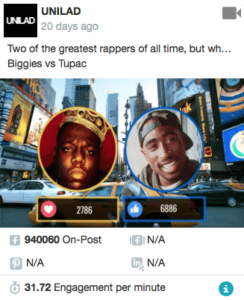Live video is Facebook’s current star feature. Ever since its launch this spring, Facebook has been heavily promoting it in the News Feed, giving live videos immense reach and therefore engagement.
The idea is not new – Meerkat, Periscope, and other dedicated live-streaming apps have popularised live video over the last few years. Though the difference with Facebook is 1.8 billion users – rolling out live videos to that kind of audience has tremendous possibilities for publishers.
However, producing any kind of video is resource-intense and it’s still not clear how to make money on live video other than producing paid content. While big American publishers like BuzzFeed, New York Times, CNN, and others got paid millions by Facebook to create live videos, media companies elsewhere were left to figure things out for themselves.
And that’s how live video polling came about. You might have seen it around the US presidential elections – when NBC, for example, used live video to broadcast voting results as they were coming in:
At the same time, some other publishers used live video polls to ask people on Facebook who they thought would win the elections – and gained twice more reactions than NBC.
We’ve seen a resurgence of live polling videos before and since then in our tool. Below are some notable examples with the biggest numbers.
9GAG gained almost 800,000 engagements from this live video poll about British actors. The video proved to be so popular, they did multiple variations of the same poll with different British actors (Rowan Atkinson won every poll, if you’re interested).
BuzzFeed earned over 4M engagements with a live video poll that pitted cat people against dog people.

UNILAD gained almost 1M engagements with a live poll for the greatest rapper of all time (video since then deleted).
Eurosport asked people to vote for their favourite football player, gaining over 500,000 engagements, while Nyheter24 got almost 150,000 engagements on a live video that asked people’s preference between two ways of pronouncing the Swedish word for biscuit:
Overall when looking at the most popular stories in most countries we track with EzyInsights, live video polls were among the top stories in terms of engagement numbers.
There’s a reason for that. Live video polls are easy to set up – one Google search reveals a multitude of services that can help. Once the poll is set, publishers keep it live for up to 4 hours and gain a tonne of engagement.
The cost is virtually zero, and the gratification in terms of numbers is immediate.
Yet, as we’ve seen with clickbait articles and memes on Facebook – they take off, they help publishers to gain a tonne of engagement in the short-term, but sooner rather than later Facebook catches on the trick and cracks them down.
Live video itself won’t disappear, but we suspect the reach of live video polls will. And with reach, so will their engagement.
It is an editorial decision of every publication whether to do live video polls or not. If your objective is to gain as many reactions, comments, or shares as quickly as possible – live video polls are a great tool at the moment. But you might be running the risk of alienating certain audiences, who get quickly tired of clickbait. At the end of the day, the goal of these polls is to game the system for maximum returns. They are shallow in substance but rich in engagement – at least for now.
As this 2015 article from TechCrunch predicted, live video is the new clickbait – it’s “content creation without the need to create any content”. And live video polls are the purest expression of that statement.
When it comes to gaming Facebook algorithm, never underestimate the ingenuity of publishers hungry for high returns with little investment.
